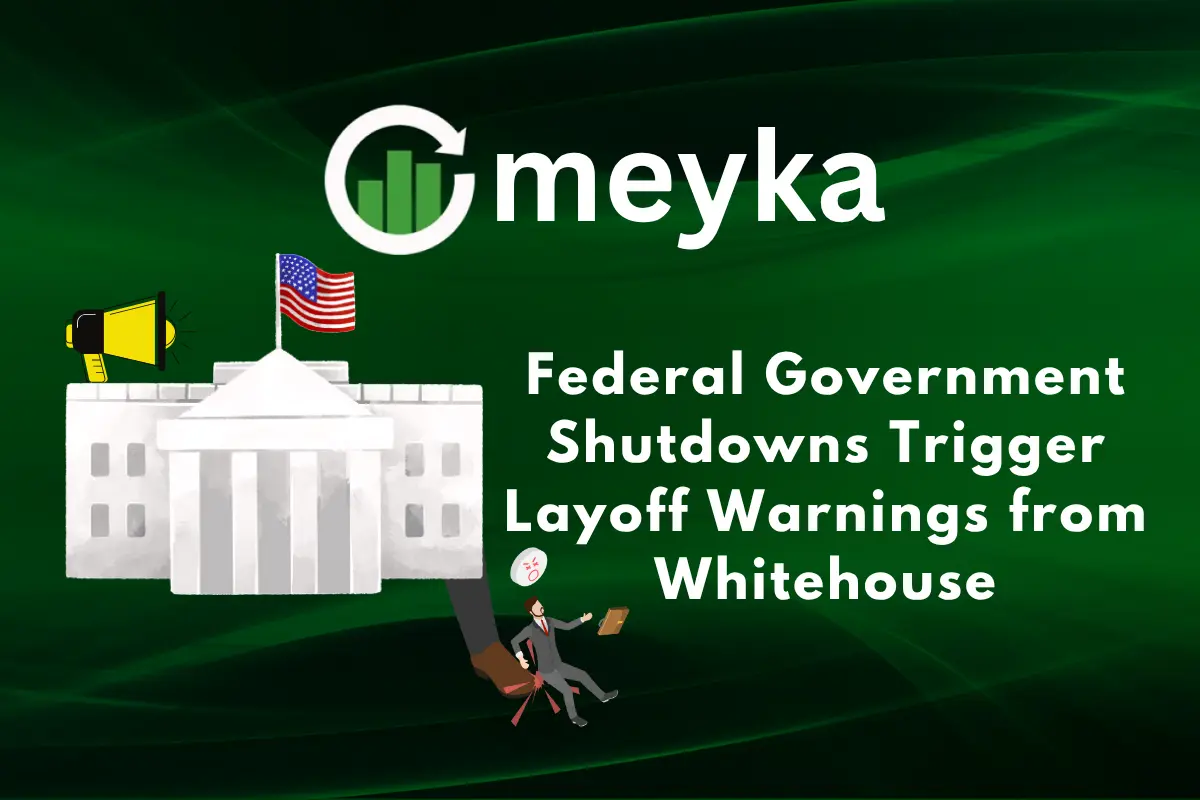Federal Government Shutdowns Trigger Layoff Warnings from Whitehouse
On October 1, 2025, the United States federal government entered a partial shutdown after Congress failed to pass necessary funding legislation. This marked the first shutdown of President Donald Trump’s second term. The immediate consequence was the furlough of approximately 750,000 federal employees, with many others compelled to work without pay. Vice President J.D. Vance, during a White House press briefing, warned that if the shutdown persists, layoffs could occur within days.
The shutdown stems from a partisan deadlock over healthcare subsidies and federal spending priorities. Democrats advocate for extending enhanced Affordable Care Act tax credits, while Republicans demand cuts to federal programs. The White House has placed the blame on Democrats, accusing them of obstructing efforts to end the shutdown.
This unprecedented threat of permanent federal layoffs has intensified the political and economic stakes of the shutdown. Let’s explore the causes of the shutdown, the potential consequences for federal employees, and the broader implications for the U.S. economy.
Background: Government Shutdowns
A government shutdown occurs when Congress fails to pass necessary funding legislation, leading to a halt in federal operations. This situation can arise from political disagreements over budget allocations, policy priorities, or other legislative issues. The most recent shutdown began at midnight on October 1, 2025, marking the first such event during President Donald Trump’s second term. The immediate consequence was the furlough of approximately 750,000 federal employees, with many others compelled to work without pay.
Historically, shutdowns have disrupted various government services, including national parks, research agencies, and administrative functions. While essential services like national security and law enforcement typically continue, non-essential services are suspended, leading to delays and inefficiencies. The economic impact is also significant, with the Congressional Budget Office estimating a daily cost of $400 million in lost productivity and wages during the current shutdown.
White House Response and Layoff Warnings
In response to the ongoing shutdown, the White House has issued stern warnings about potential layoffs. Vice President J.D. Vance stated that if the shutdown persists, “we’re going to have to lay people off,” indicating a shift from the traditional furlough system to permanent reductions in force (RIFs). White House Press Secretary Karoline Leavitt echoed these concerns, suggesting that layoffs could occur “very soon” if the impasse continues.
The administration’s approach marks a departure from past practices, where federal employees were typically furloughed and later reimbursed. The current strategy involves identifying and eliminating positions deemed non-essential, a move that has raised legal and ethical questions.
Labor unions have strongly opposed these actions, arguing that such layoffs are illegal and immoral. The American Federation of Government Employees has filed a lawsuit against the administration, challenging the legality of the proposed RIFs.
Economic Implications of a Shutdown
The economic ramifications of a federal government shutdown are profound and multifaceted. Beyond the immediate loss of income for federal workers, the shutdown disrupts various sectors reliant on federal funding. For instance, infrastructure projects in Democratic-leaning states have been halted, with approximately $18 billion in federal funds frozen for major New York projects like the Second Avenue Subway and the Gateway Hudson Tunnel.

The broader economy also suffers due to decreased consumer spending and investor uncertainty. The Congressional Budget Office’s estimate of a $400 million daily cost underscores the significant financial strain imposed by the shutdown. Moreover, the threat of permanent layoffs adds to the economic instability, potentially affecting consumer confidence and economic growth.
Political Context
The current shutdown is the result of a prolonged political deadlock between Republicans and Democrats over funding priorities. Central to the dispute is the extension of healthcare subsidies under the Affordable Care Act, with Democrats advocating for their continuation and Republicans opposing them. The Trump administration has placed the blame on Democrats, accusing them of obstructing efforts to end the shutdown.
This partisan conflict has led to a gridlock in Congress, with no immediate resolution in sight. The Senate has yet to pass a funding bill, and the House remains delayed due to religious observances. The absence of negotiations and the entrenched positions of both parties suggest that the shutdown could persist for an extended period, increasing the likelihood of permanent federal layoffs.
Public and Employee Reactions
The public response to the shutdown and the threat of layoffs has been one of concern and frustration. Polls indicate that a significant portion of the American public holds Republicans responsible for the shutdown, with 38% blaming them compared to 27% blaming Democrats.

Federal employees and labor unions have expressed strong opposition to the administration’s approach. The American Federation of Government Employees has filed a lawsuit, arguing that the proposed layoffs violate federal labor laws and due process rights. The uncertainty and anxiety among federal workers are palpable, with many fearing for their job security and financial stability.
Potential Solutions and Preventive Measures
To prevent further economic damage and alleviate the strain on federal employees, several measures could be considered. A temporary funding measure, such as a continuing resolution, could provide immediate relief by extending government operations while negotiations continue. Additionally, bipartisan cooperation is essential to address the underlying issues causing the shutdown and to pass a comprehensive funding bill.
The administration could also explore alternative strategies to reduce the federal workforce without resorting to permanent layoffs. For example, offering voluntary early retirement programs or incentivizing attrition could help achieve cost savings while minimizing the impact on employees.
Bottom Line
The ongoing federal government shutdown, now in its second day as of October 2, 2025, has far-reaching implications for federal employees, the economy, and the political landscape. The White House’s warning of imminent layoffs marks a significant escalation, diverging from previous shutdowns that typically involved temporary furloughs.
As the situation develops, it is crucial for all parties involved to engage in constructive dialogue to resolve the deadlock and mitigate the adverse effects on the American public and federal workforce.
Frequently Asked Questions (FAQs)
A government shutdown happens when Congress does not approve funding on time. Many federal offices stop working. Non-essential employees go home. The latest shutdown started on October 1, 2025.
During a shutdown, some federal workers do not get paid. Essential staff may work without pay. The current shutdown on October 1, 2025, affects about 900,000 employees.
The shutdown happened because Congress could not agree on the budget. Democrats and Republicans disagreed over spending and healthcare. Funding was not approved, starting the shutdown on October 1, 2025.
Disclaimer: The above information is based on current market data, which is subject to change, and does not constitute financial advice. Always do your research.






